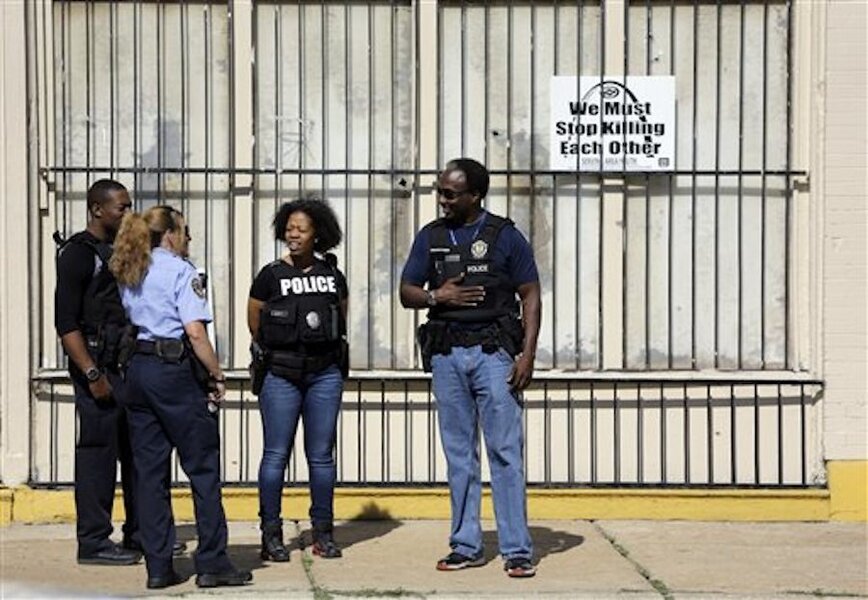Autopsy raises questions about police account of St. Louis teen's death
Loading...
A black teenager fatally shot by white St. Louis police officers Wednesday died from a single gunshot that pierced his back and struck his heart, a medical examiner said on Friday.
The results of an autopsy done on Mansur Ball-Bey’s body seem to contradict police accounts claiming two officers shot the 18-year-old after he pulled a handgun while fleeing a home where police were serving a search warrant.
Officials claimed Mr. Ball-Bey dropped his weapon and continued running after police shot him. Yet the latest evidence brings that explanation into question.
The position of the bullet suggests that Ball-Bey wasn't turned toward the officers when he was shot, according to Michael Graham, chief medical examiner of St. Louis.
If the teenager had been facing the officers, the gunshot would have killed him almost instantly, making it near impossible for him to keep running.
Yet the autopsy couldn’t determine whether or not Ball-Bey had slightly turned or twisted his upper body toward the officers during the shooting. "There are so many variables," Mr. Graham adds. "But he certainly wasn't facing [the officers]."
St. Louis Police Chief Sam Dotson says the location of the gunshot wound doesn’t prove or disprove the accounts given by the two police officers.
According to Jermaine Wooten, an attorney representing Ball-Bey’s family, no witnesses had seen Ball-Bey with a firearm.
"He never had a gun. He did not point back toward the officers," Mr. Wooten told CNN Friday. Ball-Bey could not have run more than a few feet after being shot, he added.
Protesters and the teenager’s relatives questioned the police accounts as nearly 150 people gathered at the scene of the shooting on Wednesday. Some chanted "Black Lives Matter," a slogan popularized after a white police officer killed Michael Brown, an unarmed black teenager, in Ferguson, Mo., last summer.
Similar to the mass demonstrations marking the anniversary of Mr. Brown’s killing on Aug. 9, 2014, Wednesday night’s protests included violent clashes between residents and officers in riot gear who tried to disperse crowds with tear gas.
Authorities will continue to investigate this week’s shooting, police said in a statement. They will hand over a report of evidence on the incident to the city attorney and the US Attorney in St. Louis for review.
This report contains material from Reuters.








